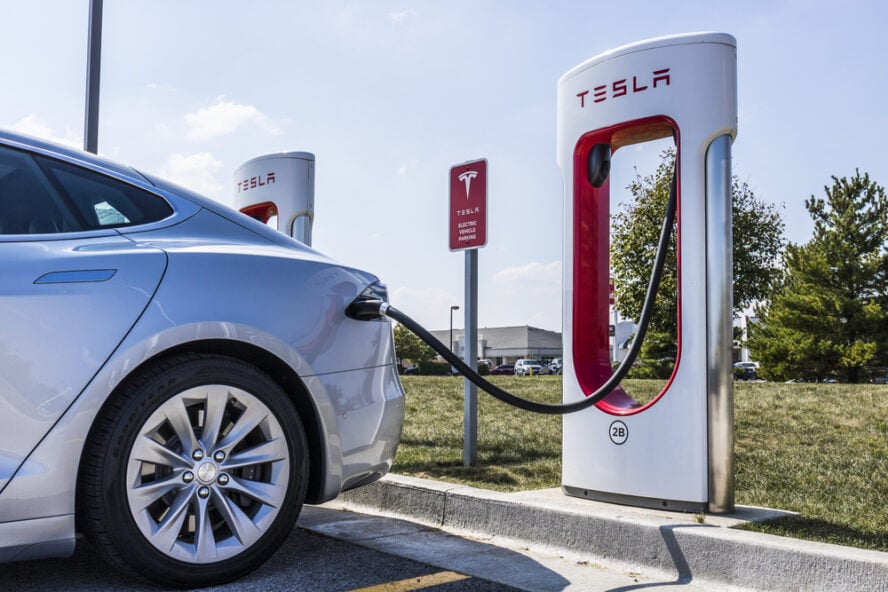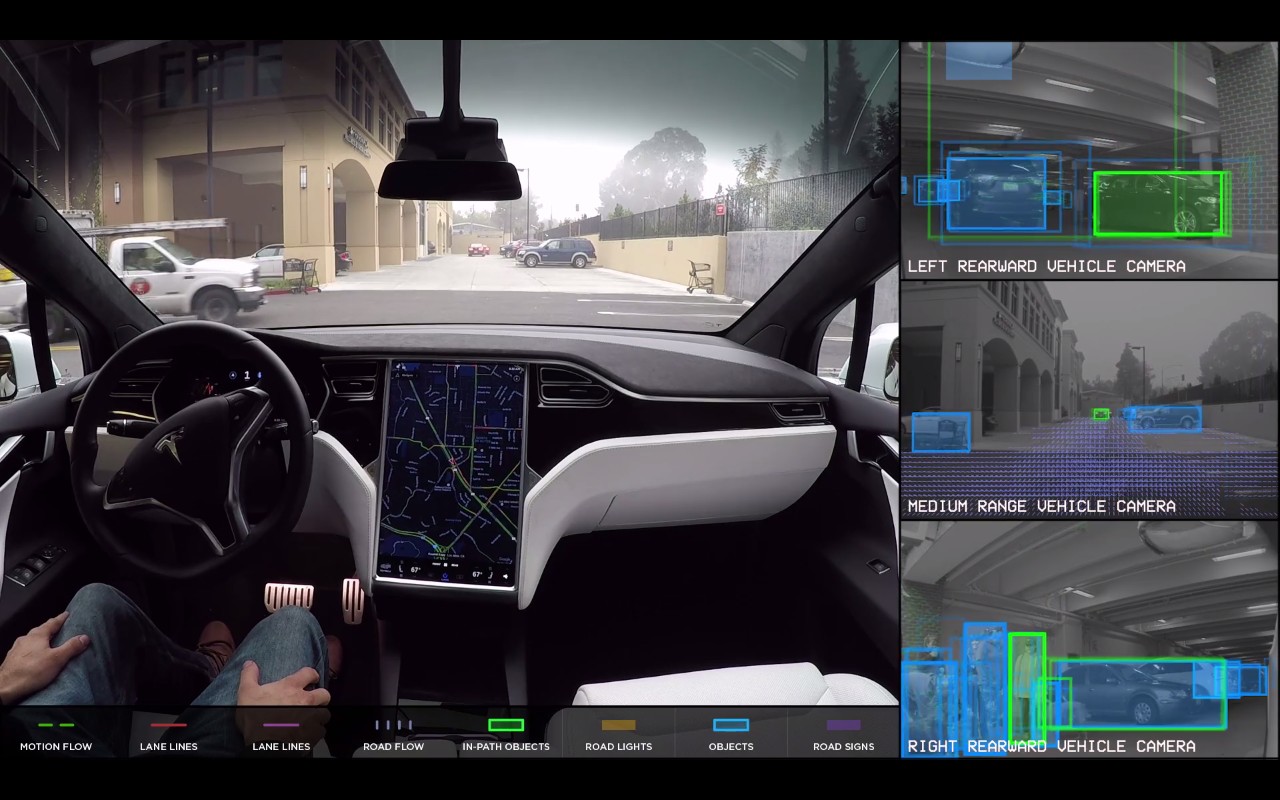
Introduction
It’s our pleasure to delve into the intriguing topic related to Tesla: The Electric Vehicle That’s Changing the Conversation. Let’s weave interesting information and offer fresh perspectives to the readers.
Table of Content
- 1 Introduction
- 2 The Tesla Revolution: More Than Just a Car
- 2.1 From Roadster to Revolution: Tesla’s Journey
- 2.1.1 The Tesla Advantage: Performance and Technology
- 2.1.1.1 Unrivaled Acceleration and Range
- 2.1.1.2 Over-the-Air Updates: A Constantly Evolving Vehicle
- 2.1.1.3 Autopilot and Full Self-Driving Capability: The Future of Driving
- 2.1.1.3.1 The Challenges and Criticisms of Tesla
- 2.1.1.3.2 Addressing the Critics: Tesla’s Response to Challenges
- 3 The Broader Impact: Tesla’s Influence on the EV Market
- 3.2 The Ripple Effect: Inspiring Competition and Innovation
- 3.3 Charging Infrastructure: Building the Network for Electric Vehicles
- 3.4 The Future of Tesla and the Electric Vehicle Revolution
- 3.4.2 Tesla’s Vision: Beyond the Car
- 3.4.3 The Road Ahead: Challenges and Opportunities
- 4 Conclusion
- 4.5 Frequently Asked Questions (FAQs)
- 5 Closure
Tesla: The Electric Vehicle That’s Changing the Conversation
The Tesla Revolution: More Than Just a Car
Remember when electric cars were considered quirky, underpowered, and frankly, a bit boring? Those days are long gone. Tesla, the brainchild of Elon Musk, hasn’t just built electric vehicles; it’s engineered a cultural shift. We’re talking about a company that’s not just selling cars, but a vision – a future where sustainable transportation isn’t a niche market, but the norm. This isn’t just about reducing emissions; it’s about redefining performance, technology, and the very experience of driving. I’ve personally witnessed this firsthand, attending several Tesla owner meetups and test driving various models. The sheer enthusiasm and passion surrounding the brand are infectious, a testament to the impact Tesla has had on the automotive landscape. It’s a phenomenon that goes beyond the horsepower under the hood; it’s about the innovative spirit, the cutting-edge technology, and the promise of a cleaner tomorrow. Think about it: a company that started with a single, somewhat unconventional Roadster has completely disrupted one of the world’s largest and most established industries. That, my friends, is a story worth telling.
From Roadster to Revolution: Tesla’s Journey
Tesla’s journey is a fascinating case study in disruptive innovation. Starting with the eye-catching Roadster, a sports car that proved electric vehicles could be both powerful and stylish, Tesla gradually expanded its offerings. The Model S sedan, with its stunning acceleration and cutting-edge technology, cemented Tesla’s position as a major player. The Model X SUV, with its falcon-wing doors, further showcased Tesla’s commitment to pushing boundaries. The Model 3, a more affordable option, democratized access to electric vehicles, making them available to a wider audience. And now, with the Cybertruck and the Model Y, Tesla continues to explore new segments and redefine what’s possible. Each model represents a significant leap forward in battery technology, performance, and autonomous driving capabilities. It’s a testament to their relentless pursuit of innovation, a constant cycle of improvement that keeps them at the forefront of the industry. This wasn’t just a gradual improvement; it was a complete overhaul, a revolution in the making.
The Tesla Advantage: Performance and Technology
Unrivaled Acceleration and Range
One of the most compelling aspects of Tesla vehicles is their performance. Forget the sputtering, underpowered electric cars of the past. Tesla’s vehicles boast blistering acceleration, often outperforming many gasoline-powered counterparts. The instant torque provided by the electric motors results in an exhilarating driving experience. Moreover, Tesla’s constantly improving battery technology translates to impressive range, allowing for longer journeys without the anxiety of range depletion. I remember my first experience with a Model S – the sheer acceleration pinned me to my seat, a feeling unlike anything I’d experienced in a traditional car. This isn’t just about speed; it’s about a seamless, powerful driving experience that’s both efficient and exhilarating.
Over-the-Air Updates: A Constantly Evolving Vehicle
Unlike traditional cars, Tesla vehicles receive regular over-the-air software updates. This means your car is constantly improving, getting new features and performance enhancements without needing to visit a service center. It’s like having a smartphone on wheels, constantly evolving and adapting. This continuous improvement is a key differentiator for Tesla, ensuring that their vehicles remain at the cutting edge of technology. Think about it: your car gets better over time, learning and adapting to your driving habits and improving its performance. This is a paradigm shift in how we view car ownership. It’s not a static purchase; it’s a dynamic, evolving relationship with your vehicle.
Autopilot and Full Self-Driving Capability: The Future of Driving
Tesla’s Autopilot and Full Self-Driving (FSD) capabilities are pushing the boundaries of autonomous driving technology. While still under development, these features offer a glimpse into the future of transportation, promising increased safety and convenience. The Autopilot system already provides advanced driver-assistance features, such as adaptive cruise control and lane keeping assist. FSD aims to take this further, eventually allowing for fully autonomous driving. However, it’s crucial to acknowledge that this technology is still evolving, and drivers should remain vigilant and responsible. This is a double-edged sword; the potential benefits are immense, but the ethical and safety considerations are equally important and demand careful consideration. It’s a technology that’s shaping the future of driving, but we must proceed cautiously and responsibly.
The Challenges and Criticisms of Tesla
Tesla’s rapid growth and ambitious goals haven’t been without challenges. Production bottlenecks, quality control issues, and controversies surrounding Elon Musk’s leadership have all been subjects of public scrutiny. Critics point to the company’s aggressive timelines, high prices, and the limitations of its autonomous driving technology. Furthermore, concerns about Tesla’s environmental impact, particularly regarding the mining of lithium for batteries, need to be addressed. These are valid concerns, and Tesla needs to continue working on improving its manufacturing processes, addressing quality issues, and being transparent about its environmental footprint. Ignoring these issues would be detrimental to Tesla’s long-term success and its impact on the industry.
Addressing the Critics: Tesla’s Response to Challenges
Tesla has responded to criticisms by investing in its manufacturing capabilities, improving quality control, and working to enhance its autonomous driving technology. They are also actively exploring alternative battery technologies and sustainable mining practices to mitigate their environmental impact. While the challenges remain, Tesla’s commitment to innovation and improvement suggests that they are actively addressing these concerns. It’s a testament to their commitment to not only producing high-performance electric vehicles but also to operating responsibly and sustainably. This is an ongoing process, and continuous improvement is crucial for maintaining public trust and driving the industry forward.

The Broader Impact: Tesla’s Influence on the EV Market
The Ripple Effect: Inspiring Competition and Innovation
Tesla’s success has spurred significant competition in the electric vehicle market. Established automakers are investing heavily in electric vehicle development, recognizing the shift towards sustainable transportation. This increased competition has led to faster innovation, more affordable electric vehicles, and a wider range of options for consumers. Tesla’s impact goes beyond its own sales figures; it’s about accelerating the entire industry towards a more sustainable future. It’s a classic example of how one company can trigger a massive industry-wide transformation. The competition is fierce, but ultimately, it benefits consumers and pushes the boundaries of what’s possible.
Charging Infrastructure: Building the Network for Electric Vehicles
Tesla’s investment in its Supercharger network has been instrumental in addressing one of the major barriers to widespread electric vehicle adoption: range anxiety. The availability of a reliable and convenient charging infrastructure is crucial for encouraging more people to switch to electric vehicles. While other charging networks are emerging, Tesla’s Supercharger network has set a high standard for speed, convenience, and reliability. This is not just about charging stations; it’s about creating a seamless and user-friendly experience that makes electric vehicle ownership more appealing. It’s a vital piece of the puzzle in the transition to electric mobility.
The Future of Tesla and the Electric Vehicle Revolution
Looking ahead, Tesla’s continued success will depend on its ability to address the challenges mentioned earlier, maintain its innovative edge, and navigate the ever-evolving regulatory landscape. The company’s expansion into energy storage and solar power further solidifies its position as a leader in sustainable technology. Tesla’s influence extends beyond just cars; it’s shaping a broader ecosystem of sustainable energy solutions. The future is electric, and Tesla is at the forefront of this transformation. This isn’t just about selling cars; it’s about building a sustainable future, one electric vehicle at a time.
Tesla’s Vision: Beyond the Car
Tesla’s ambitions extend far beyond the production of electric vehicles. The company’s foray into energy storage with its Powerwall and Powerpack products demonstrates a commitment to a broader vision of sustainable energy solutions. This integrated approach, combining electric vehicles with renewable energy sources, is crucial for achieving a truly sustainable transportation system. It’s not just about the cars; it’s about creating a holistic ecosystem that supports a cleaner and more efficient future. This integrated approach is a key component of Tesla’s long-term strategy and their commitment to a sustainable future.
The Road Ahead: Challenges and Opportunities
The road ahead for Tesla and the electric vehicle industry is paved with both challenges and opportunities. Competition is intensifying, regulatory landscapes are evolving, and technological advancements are constantly pushing the boundaries of what’s possible. However, the growing demand for sustainable transportation presents a significant opportunity for Tesla and its competitors. The future of transportation is electric, and the race to develop innovative, affordable, and sustainable electric vehicles is only just beginning. It’s a dynamic and evolving landscape, full of challenges and opportunities for innovation and growth.
Conclusion

Tesla’s impact on the automotive industry is undeniable. It has not only revolutionized electric vehicle technology but also shifted the conversation around sustainable transportation. From its groundbreaking Roadster to its ambitious plans for full self-driving capabilities, Tesla has consistently pushed the boundaries of innovation. While challenges remain, Tesla’s vision of a sustainable future, combined with its technological prowess, positions it as a key player in shaping the future of transportation. The company’s journey is a testament to the power of innovation, perseverance, and a bold vision for a cleaner tomorrow.
The future of transportation is undoubtedly electric, and Tesla’s influence on this transition is profound and far-reaching. The company’s commitment to innovation, coupled with its growing influence on the electric vehicle market, suggests a bright future for both Tesla and the broader industry. The journey towards widespread electric vehicle adoption is an ongoing process, but Tesla’s impact is undeniable, and its influence on the future of transportation is only going to grow.
Frequently Asked Questions (FAQs)
- What is the range of a Tesla vehicle? The range varies significantly depending on the model, battery size, driving conditions, and other factors. However, many Tesla models now boast ranges exceeding 300 miles on a single charge.
- How long does it take to charge a Tesla? Charging times depend on the charging infrastructure used. Tesla Superchargers can provide a significant charge in a relatively short time, while home charging can take longer, typically overnight.
- How much does a Tesla cost? Tesla vehicle prices vary significantly depending on the model and optional features. They range from more affordable options to high-performance luxury vehicles.
- Is Tesla’s Full Self-Driving (FSD) technology fully autonomous? No, Tesla’s FSD technology is still under development and requires driver supervision. It is not yet capable of fully autonomous driving in all conditions.
- What is Tesla’s impact on the environment? While Tesla vehicles produce zero tailpipe emissions, the environmental impact of lithium mining for batteries and manufacturing processes remains a concern. Tesla is actively working on mitigating these environmental impacts.
Closure
In conclusion, we hope this article has provided valuable insights into Tesla: The Electric Vehicle That’s Changing the Conversation. Thank you for spending your time with us. See you in our next article!